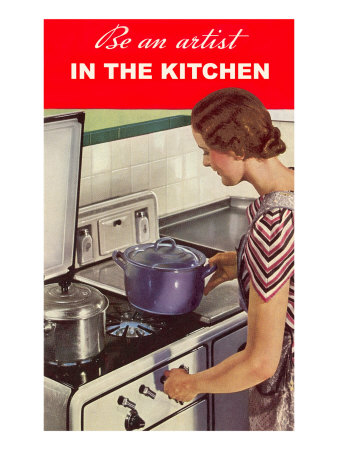"And the daughter of Pharaoh came down to wash herself at the river; and her maidens walked along by the river's side; and when she saw the ark among the flags, she sent her maid to fetch it.
And when she had opened it, she saw the child: and, behold, the babe wept. And she had compassion on him, and said, This is one of the Hebrews' children.
Then said his sister to Pharaoh's daughter, Shall I go and call to thee a nurse of the Hebrew women, that she may nurse the child for thee?
And Pharaoh's daughter said to her, Go. And the maid went and called the child's mother.
And Pharaoh's daughter said unto her, Take this child away, and nurse it for me, and I will give thee thy wages. And the women took the child, and nursed it.
And the child grew, and she brought him unto Pharaoh's daughter, and he became her son. And she called his name Moses: and she said, Because I drew him out of the water."
~ Exodus 2:5-10
Which historical princess in Egypt was Pharaoh's compassionate daughter who rescued the child from the river? There have been some valid speculations which are very interesting to study. Today, we will focus on the theory based on the "Revised Egyptian Chronology" (see below for more information). This group of archeologists present evidence that it may have been the Queen Sobekneferu of the 12th Dynasty who incidentally was also the first "queen" of Egypt (woman Pharaoh). Her father was Amenemhet III and had two daughters with no sons to call his own. Some historians suggest that Amenemhet III was his son but according to their findings, it is just as plausible for him to be the "recognized son" of Sobekneferu as he is quite a mysterious figure. Could he be the Moses of the Bible?
 |
| Sobekneferu heiroglyph |
Some potential clues:
- The odd Biblical account of a royal princess washing herself in the river would make sense with Sobekneferu. The fertility god of Egypt was Hapy (the river god) and she may have been observing some sort of religious ritual there in order to conceive a son. Perhaps the entrance of Moses floating in the little ark would seem to her like an answer to her plea, a gift from the gods.
- Josephus wrote about Queen Sobekneferu, "Having no child of her own… she thought to make him her father's successor."
 |
| Queen Sobekneferu was also known as Nefrusobek |
- There are no historical records that Sobekneferu gave birth to a son. When her father died, she assumed the throne and ruled for four years. Once her reign ended, that dynasty came to an end and was replaced with the 13th Dynasty (indicating there was no one to take her place in line and she would have been eager to adopt an orphan baby).
 |
| Fragmented Statue of Sobekneferu from the Louvre Museum |
- There were very few reigning queens in Egyptian records and being that her part in history is within the realms of the Israelite captivity (according to the "Revised Egyptian Chronology"), she seems an excellent candidate.
There is little known information about Queen Sobekneferu and the few artifacts that were found were incomplete. However, there is some interesting thoughts to ponder. We must realize that the Bible is true history and features real historical figures. I encourage you to present these kinds of ideas to your children, sisters and friends. Study the different theories.
"The heart of the discerning acquires knowledge,
for the ears of the wise seek it out."
~ Proverbs 18:15
Bring the Bible to life by breathing historical information into these events! There are so many fairy tales in this world, we don't want the Scriptures to be mistaken for one...
Information for this post was gleaned from ~
Visit "Revised Egyptian Chronology" for more information ~
"There is plenty evidence for Israelite slavery in Egypt–the sudden disappearance of these slaves, the devastation of Egypt by the ten plagues, the destruction of the Egyptian army–if we look for it at the right time, and time is a vital element in the interpretation of ancient history.
According to the Biblical records, the Exodus occurred 480 years before Solomon laid the foundations of his temple at Jerusalem (1 Kings 6:1). This would place the Exodus about 1446BC. God’s covenant with Abraham was 430 years earlier (Exodus 12:40, Galatians 3:16, 17) about 1850 BC. From the ages of his predecessors back to Noah, given in Genesis 12 and 13, it can be calculated that the great universal flood occurred 427 years earlier, about 2302 BC. But according to most authorities on Egyptian chronology the pyramids were built about 1550 BC, and the first dynasty of Egypt ruled about 3100 BC.23
Thus, there is a conflict between Egyptian chronology as generally interpreted and the Biblical records. Neither the first dynasty of Egypt nor the pyramids could have existed before the flood. If the Bible is historically reliable, as I believe it is, then there must be a mistake in the usual interpretation of Egyptian chronology which needs to be reduced by centuries.
The issue is clear. An acceptance of the present chronological interpretation of Egyptian history, and a rejection of the Biblical chronology, opens the door to skepticism of the rest of the early Biblical records, including the record of the Creation of the world in six days. But if Egyptian chronology can be shown to be flawed, a major obstacle to the acceptance of the Bible records is removed, and the Genesis history stands justified."



























